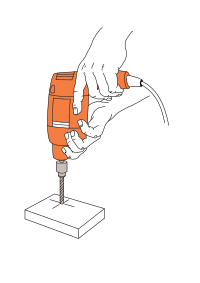
Photo from wikipedia
OBJECTIVES Screw-retained restoration of implants is advantageous for biological and esthetic reasons. Due to buccal concavities, however, this preferred type of restoration can only be used in about half of… Click to show full abstract
OBJECTIVES Screw-retained restoration of implants is advantageous for biological and esthetic reasons. Due to buccal concavities, however, this preferred type of restoration can only be used in about half of the anterior indications. Based on case series, an optimized method for the treatment of such indications is to be described; the clinical reliability is to be ascertained by means of measurements (before and after augmentation) and assigned to the current literature. MATERIAL AND METHODS A case series of seven cases with buccal concavities of the anterior alveolar ridge were treated with optimized method, which is presented step-by-step until the prosthetic restoration. The depths of the bone concavities were measured and related to the bone gain after augmentation procedure respectively after implantation. RESULTS Linear measurements of the buccal concavities showed an average undercut of 4 mm [SD ± 1.13]. After healing period of six months, the buccal concavities could be compensated bony to such an extent that implants could be inserted in correct position and angulation. On average, there was a horizontal bone gain of 3.7 mm [SD ± 0.59]. Even after implantation and another six months of healing, stable bone dimensions could be assumed with an average of 4.3 [SD ± 0.83] mm of bone gain compared to baseline. In six of the seven cases, the favorite screw-retained, one-piece full-ceramic restoration could be fixed on the implants. Due to the implant axis, one case had to be treated with a cemented two-part full-ceramic system. CONCLUSIONS With the described optimized method the most favorable screw-retained restoration can also be used in situations with unfavorable concavities of buccal bone. Especially for this indication, a special form of the horizontal deficit, the customized bone regeneration with titanium meshes is highly reliable in terms of healing and extent of augmentation. However, long-term results and a study/control group are required to evaluate the effectiveness of the presented protocol. CLINICAL RELEVANCE Since these situations require an augmentation that is up to 5 mm thick and a procedure that is as minimally invasive as possible appears to be necessary in the visible area, an optimized method is described in this publication.
Journal Title: Clinical oral investigations
Year Published: 2022
Link to full text (if available)
Share on Social Media: Sign Up to like & get
recommendations!